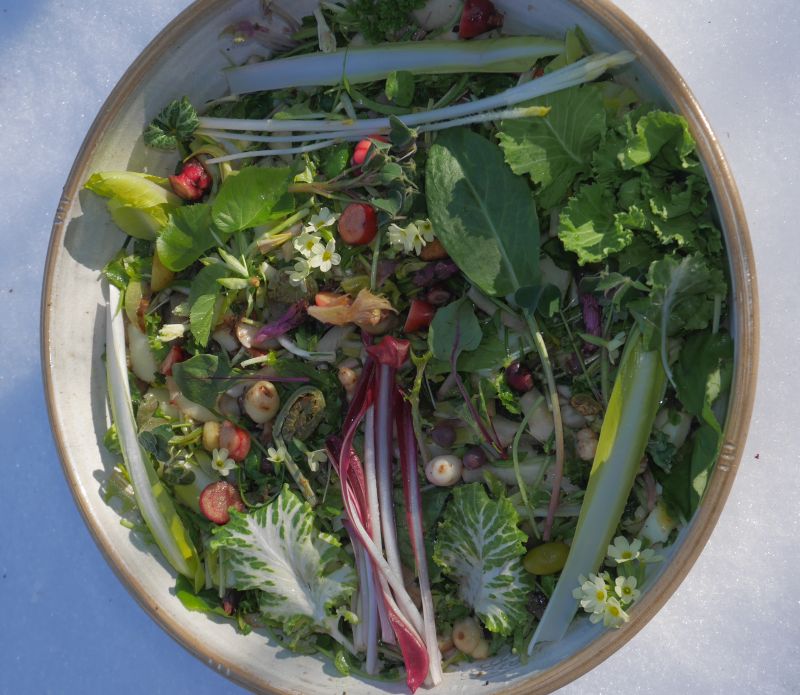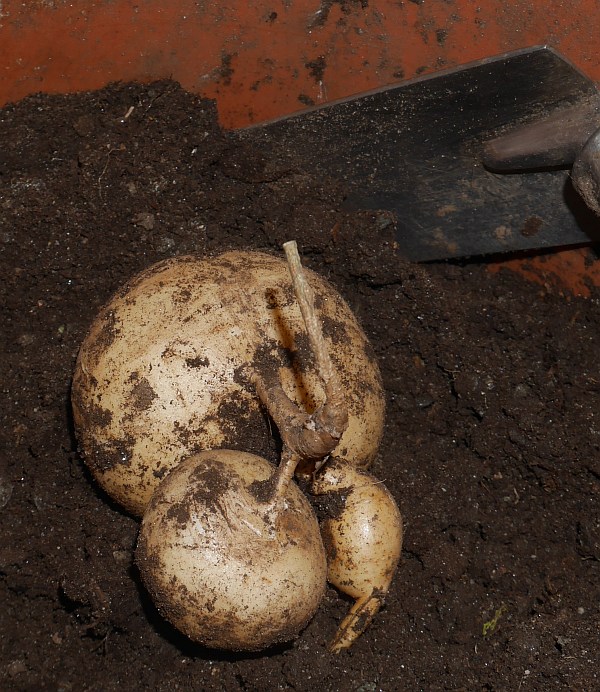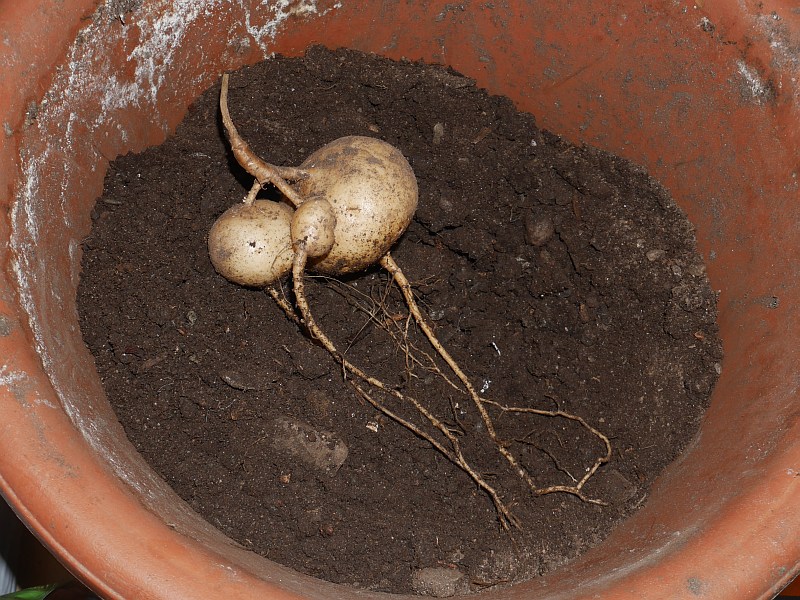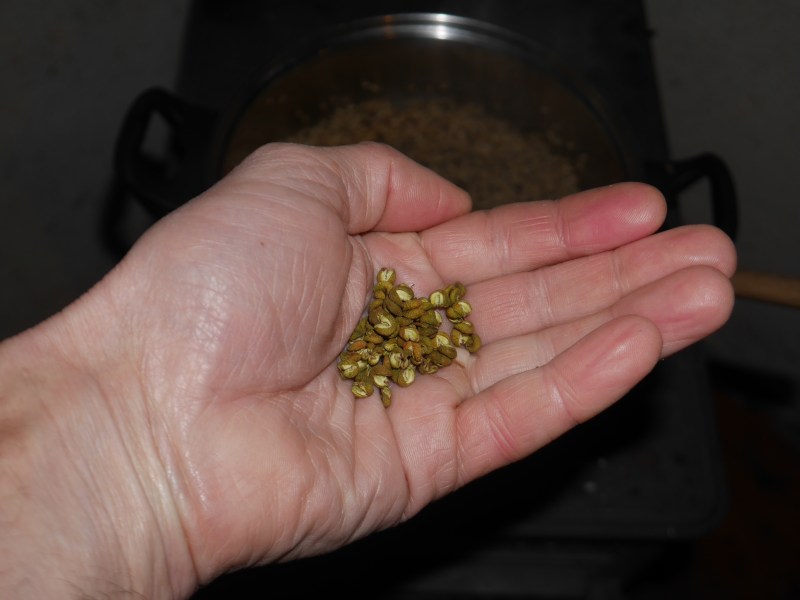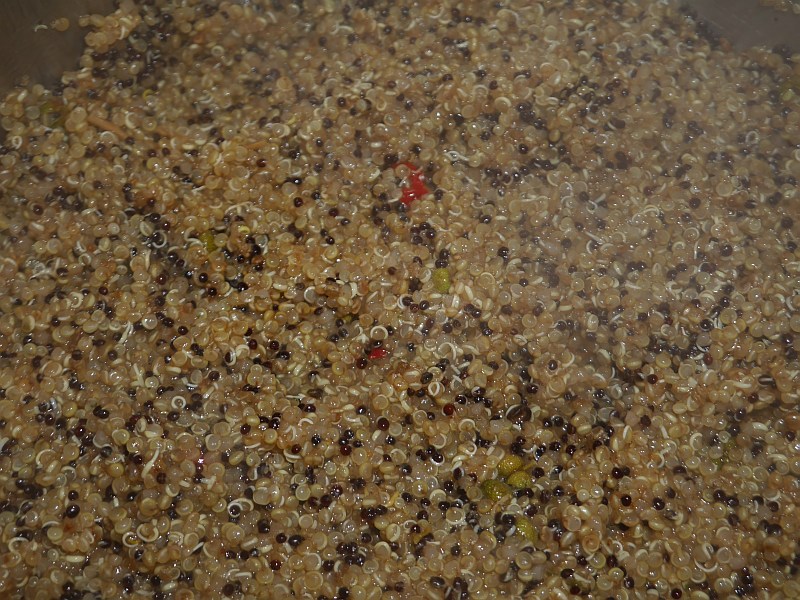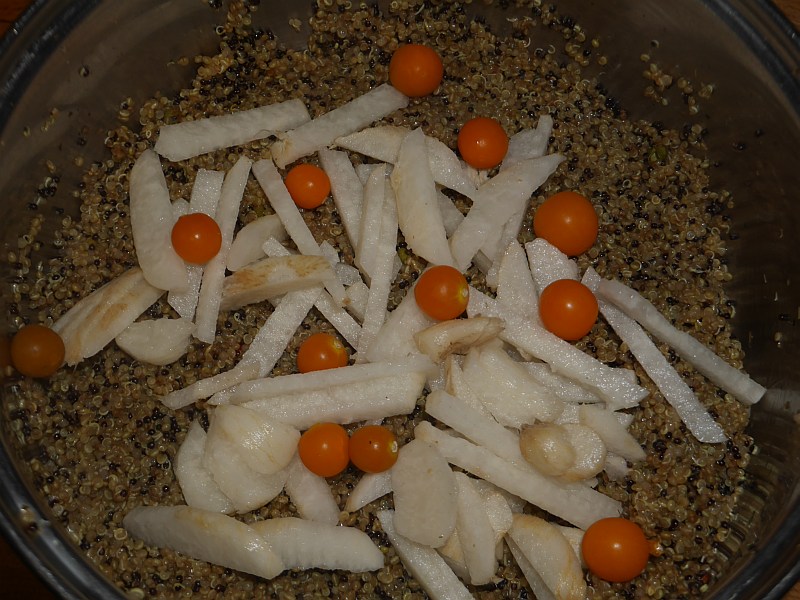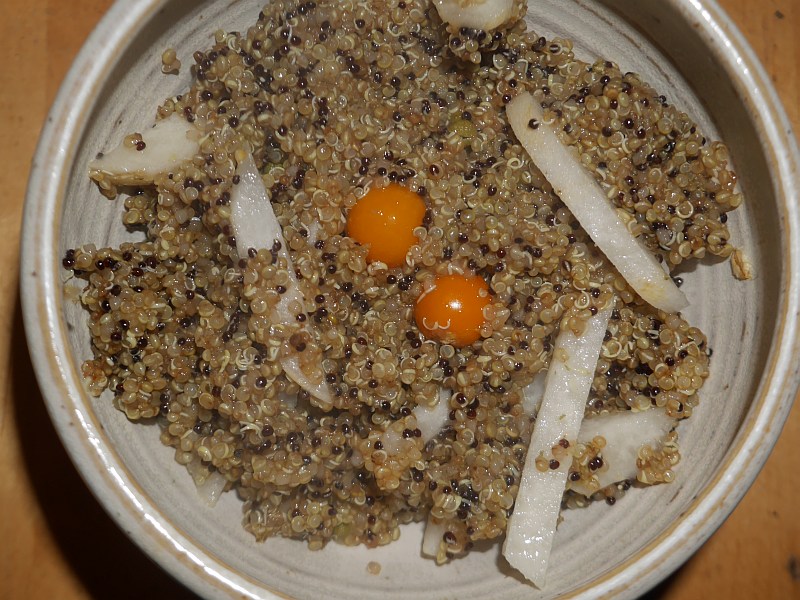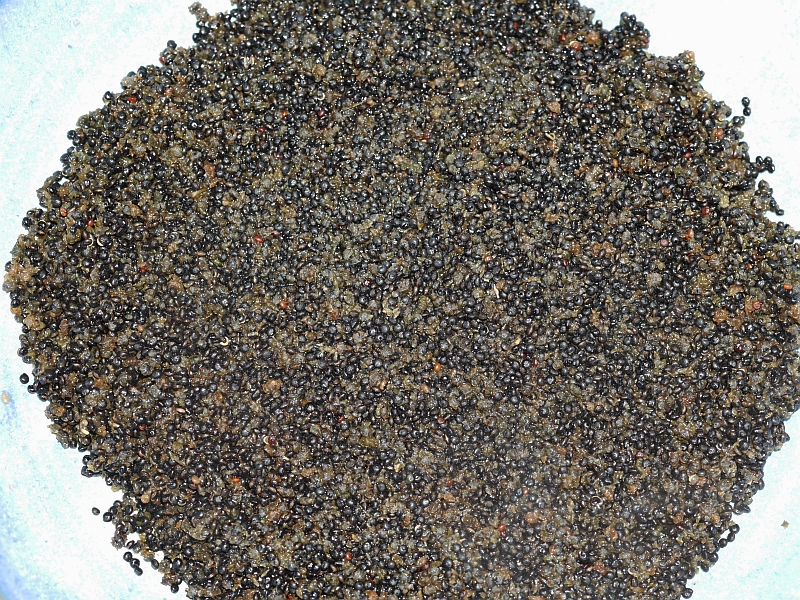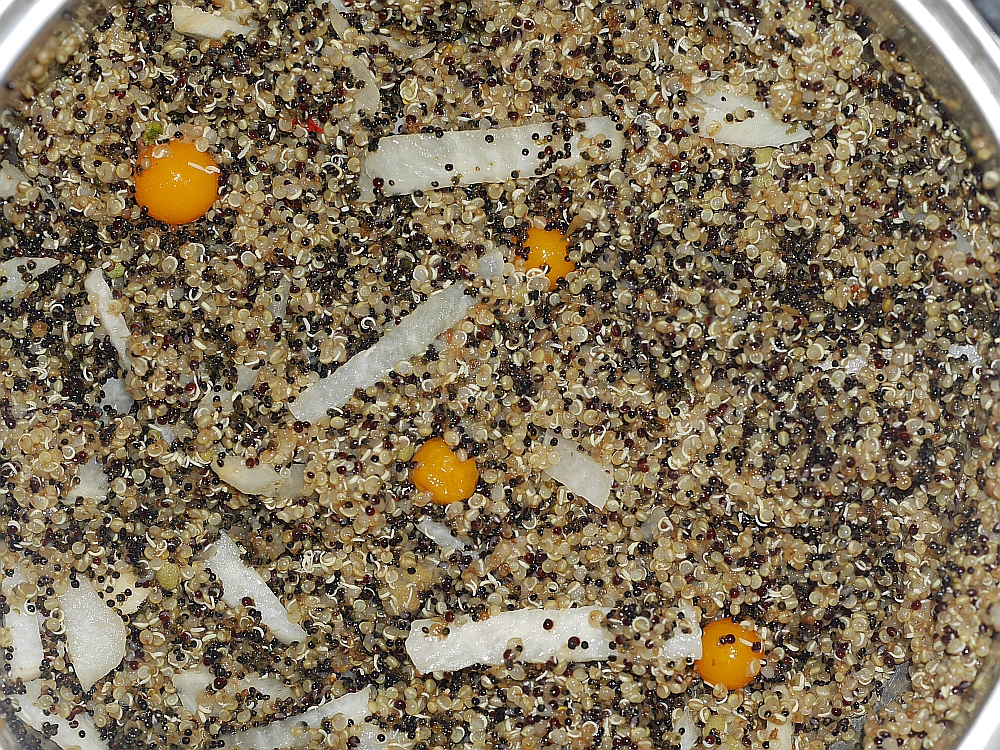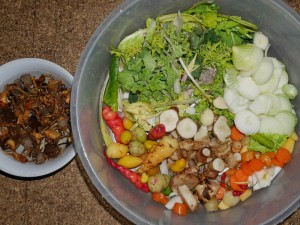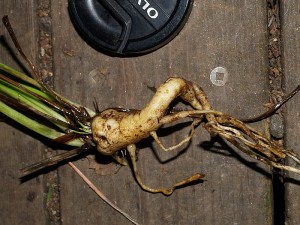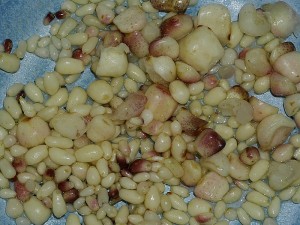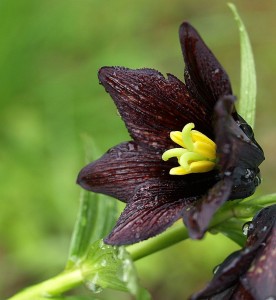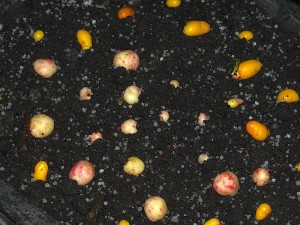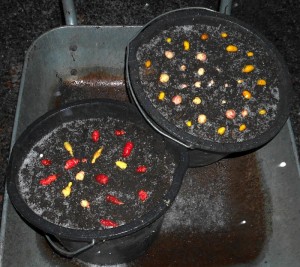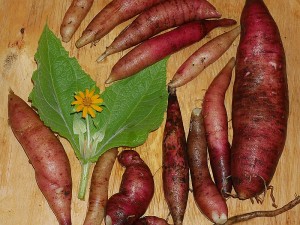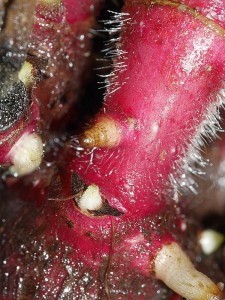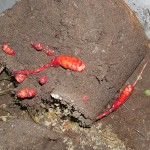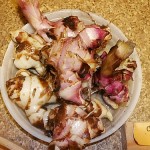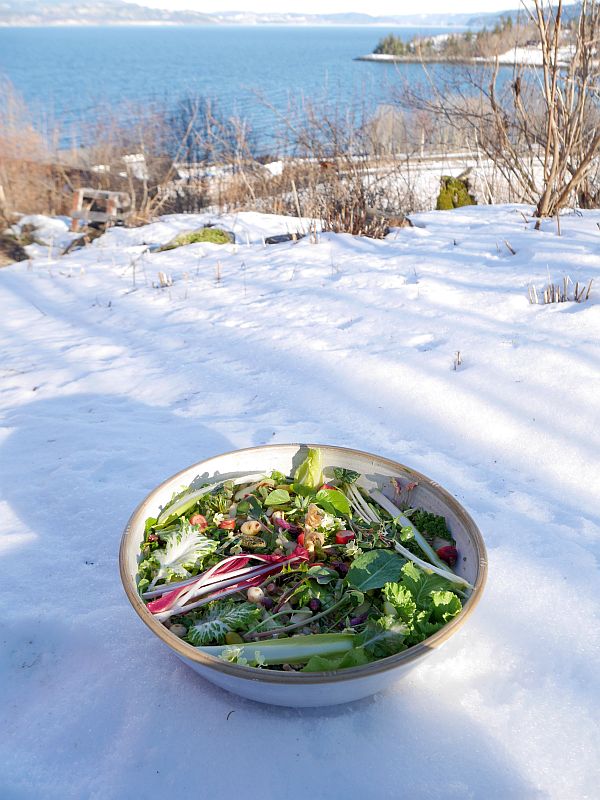
Proof one more time that north is best for growing a diversity of tasty salad greens ;) Presenting (and claiming) my new world winter salad diversity record, a salad with over 140 ingredients all harvested locally without using any additional energy than is available in my house and cellar (no greenhouse; no freezer; no fermenting involved and only dried fruit and seed used apart from fresh vegetables!). Despite the snow cover I was able to harvest some 20-30 edibles outside. More on how this can be done will be the subject of a separate post!
The salad was presented and eagerly devoured by those who had bought tickets for the Gourmet Cinema event on 9th March 2017 as part of the Trondheim Kosmorama Film Festival! It went so quickly, I didn’t even get a taste myself!
The film was followed by a Food talk with a panel including the film’s director Michael Schwarz, the head chef at Credo Heidi Bjerkan, myself and Carl Erik Nielsen Østlund, the owner of the biodynamic organic farm that supplies much of the food to Credo, moderated by Yoshi!
http://kosmorama.no/en/2016/12/gourmet-cinema-in-defense-of-food
As Michael Pollan concludes in the film:
Eat Food, Not too much and (as many as possible) mostly vegetables!
The day before, I had prepared a 105 ingredient salad for the festival dinner at Credo restaurant (http://www.edimentals.com/blog/?p=10184). While preparing that salad, I made a second salad with the same 105 ingredients…and then added almost 40 additional ingredients that I hadn’t had time to harvest the day before!
